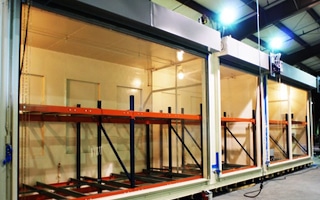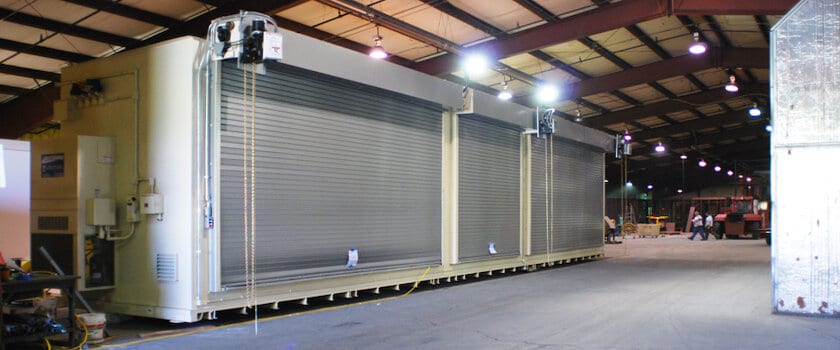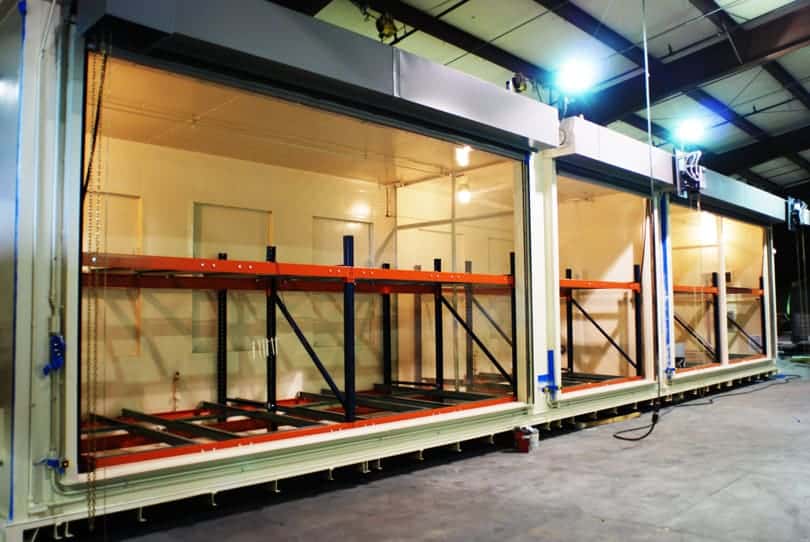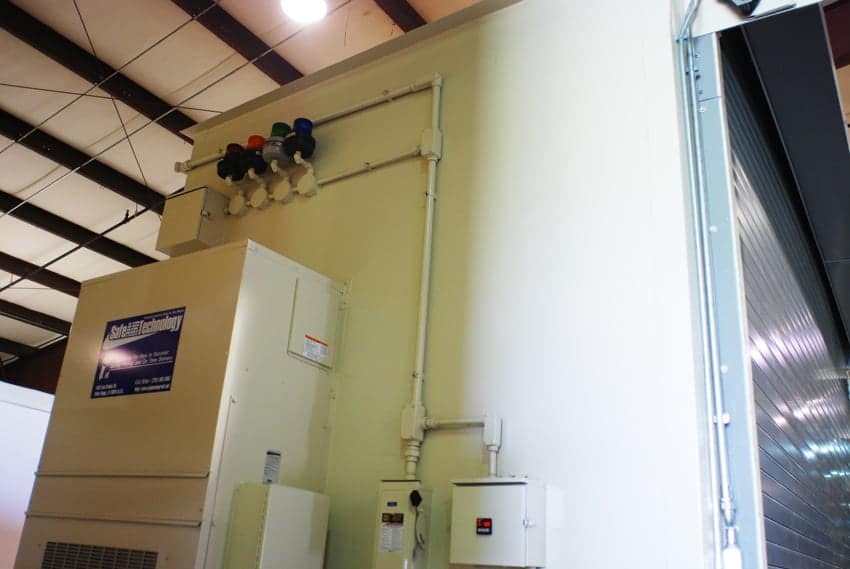Pharma Laboratory Hazmat Storage

Pharmaceutical Chemicals Transfer Process
In this case study, excess hazardous materials from a pharmaceutical manufacturing process had to be strategically transferred from their manufacturing and laboratory facilities into a compliant 90-day chemical storage facility where the material was to be prepared for proper disposal.
The Chemical Transfer Operation
Hazmat is collected from multiple on-site facilities, both manufacturing and laboratory wastes, where 55-gallon drums are then stored in divided sections within the 90-day storage facility. The hazardous drums are then transferred to a chemical storage building, where the drums are stored on pallets and prepared for the next transfer process to a 90-day chemical storage building. Leaking/bulging drums are stored on special containment pallets, to contain any leaking material. Like materials are combined for more economical disposal. During the combination process, hazardous chemical fumes must be removed from the drum interior using nitrogen blanketing and a snorkel exhauster, drum grounding, and supplied air to the operator are also available. The transfer building is designed to compliantly rid the toxic fumes to prepare drums to be safely stored into 90-day storage.What Are Hazardous Materials?
Hazardous materials are considered dangerous substances that contain properties that can potentially harm human health or the environment. Hazardous materials can include any type of chemicals, metals, or substances that are byproducts during the commercial manufacturing processes. Risks involved with handling hazmat waste can be dangerous and proper laboratory procedures must be met for the disposal process.Custom Storage Solutions for Pharmaceutical Chemicals
 U.S. Chemical Storage designed and manufactured a fully compliant fire-rated chemical storage building to meet our client’s specifications. Since the hazardous materials being transferred into this building are flammable, we customized a 2-hour, fire-rated FireLoc building with dimensions of 32 feet by 14 feet.
U.S. Chemical Storage designed and manufactured a fully compliant fire-rated chemical storage building to meet our client’s specifications. Since the hazardous materials being transferred into this building are flammable, we customized a 2-hour, fire-rated FireLoc building with dimensions of 32 feet by 14 feet.
In this building personnel traffic was estimated to be high so the building was constructed with diamond plate flooring to prevent trip hazards and personnel from slipping, over a 1200-gallon poly-lined sump. This type of flooring is designed for industrial use and is rust and corrosion resistant. This type of flooring is designed for industrial use and is rust and corrosion resistant. Transfer Building’s Safety Accessories This building was installed with an eyewash-shower station which features an accessible flow switch to initiate water flow, in case a worker encounters a hazardous accident. In the event of the eyewash-shower station being initiated an alarm travels to the central receiving station, notifying officials the eye wash station has been used. This provides real-time information that someone is in danger, allowing emergency personnel to respond quickly. Gas detectors and oxygen sensors were installed to check thresholds for limits on nitrogen when filling the drums and for monitoring safe oxygen levels for personnel and authorized officials.
Transfer Building’s Safety Accessories
Eyewash-Shower Station
This building was installed with an eyewash-shower station, which features an accessible flow switch to initiate water flow in case a worker encounters a hazardous accident.In the event of the eyewash-shower station being initiated, an alarm travels to the central receiving station, notifying officials the eye wash station has been used. This provides real-time information that someone is in danger, allowing emergency personnel to respond quickly.
Gas Detection
The gas vapor detector is designed to check for limits of vapors that may cause harm to personnel working inside the transfer building. When working with nitrogen gas dosing drums, the level of nitrogen must always be monitored to avoid the potential risk of asphyxiation to personnel.
If there is a problem with the operator there is a ‘mushroom duress’ alarm, which, when initiated, an audible alarm sounds and a signal is sent to the central receiving station.
Ventilation Systems
Constant ventilation provides for clean air flow while maintaining a safe work environment. The transfer building was equipped with six tons of cooling with 34,000 BTU’s, in order to remain 100% compliant with safe temperature controls.Motorized Roll-Up Doors
One of the key features of this building was to make it easier for the operators. All three large roll-up doors are motorized and operated with push button functions.Both sides of the building, flammable and corrosive, utilize push-back racking systems. This system is designed to make it easier for the operators to load and unload hazardous drums.

Additional Safety Features
“From design through installation, U.S. Chemical Storage has been great to work with. We have purchased four buildings in the last two years and are very happy with the product. The sales and design staff have been able to listen to our needs and work with us to achieve a cost-effective solution to our storage needs. They have met all promised delivery dates and delivered a good quality product. In addition, once the buildings were on site, U.S. Chemical Storage did not consider their job complete; they have been responsive and helpful in working through installation and startup issues. I feel like they were committed to making our project a success – unusual in a vendor!”
